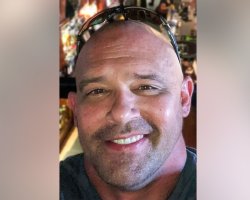The Sackler Case Comes to a Close; Final Analysis and the Importance of Holding Pharma Companies Accountable

In a landmark announcement, a federal bankruptcy judge approved a sweeping settlement in an ongoing case of Purdue Pharmaceuticals and the corporation’s owners, the Sackler family, versus thousands of plaintiffs. By and large, the settlement allows the Sackler family to get off without taking full responsibility for their company’s role in creating the opioid addiction epidemic.
A Summary of the Case
On September 1, 2021, U.S. Bankruptcy Judge Robert Drain approved a settlement that removed the Sacklers from ownership of OxyContin maker Purdue Pharmaceuticals. If the settlement withstands pending appeals, the deal will resolve over 3,000 individual lawsuits from state and local governments, Native American tribes, trade unions, and individuals. The large group of plaintiffs had come together and accused the company and its owners of helping start the opioid epidemic.
Under the settlement, while the Sacklers face zero criminal charges, they will have to get out of the opioid business and contribute $4.5 billion in restitution. Also, the Sackler family is shielded from ALL further litigation over opioids or anything connected to the opioid epidemic.
Another key development is that Purdue Pharmaceuticals will be reorganized into a charity-oriented company with a board appointed by public officials. Profits from the company will go towards funding government-led efforts at preventing and treating addiction, particularly in geographic regions hit hardest by opioid addiction.
Judge Robert Drain decided to approve the settlement because, though he said he does not have “fondness for the Sacklers or sympathy for them,” he did feel that attempting to collect more restitution money from lawsuits and further litigation would have been more difficult, complicated, and time-consuming.
However, the bankruptcy settlement itself was far from simple or timely. The court case has been ongoing for over two years and has seen the Sacklers maneuver themselves time and time again to avoid responsibility for their role in creating the opioid epidemic that has claimed hundreds of thousands of American lives.
Also of note, Judge Robert Drain only approved the settlement by first amending the Sackler’s immunity bid to constrain their request for immunity to only opioid-related charges, indicating that plaintiffs could attempt to sue the Sacklers for other allegedly criminal behavior. This is a small victory in an otherwise disappointing outcome.
Another small victory within the case is that several attorney generals won a provision within the settlement that will create a massive public repository of Purdue company documents, including ones that would normally be protected by attorney-client privilege. It’s likely the Sacklers only agreed to this provision because they won far-reaching immunity. But as more of the details of Purdue/Sackler malfeasance come forward due to the declassification of documents, the American people will learn further the true degree of the Purdue/Sackler role in the opioid epidemic.
This most recent lawsuit is not the first time the Sacklers and Purdue have been in legal trouble over OxyContin, though it is certainly the highest-profile case. In 2007, Purdue Pharmaceuticals pled guilty to federal charges that the company had misled FDA regulators and others about the addictive dangers of OxyContin. In short, Purdue knew OxyContin was addictive, but they lied and said it wasn’t. That lie cost the company $600 million in penalties, and it cost the United States thousands of American lives.
In November of 2020, Purdue pled guilty to another lawsuit in a settlement with the U.S. Justice Department. Purdue admitted it had conspired to defraud the United States and violate anti-kickback laws by giving doctors bonuses and favors for prescribing OxyContin.
Voices of Dissent

Judge Robert Drain’s recent decision came with much public outcry from plaintiffs, particularly as the settlement shields the Sackler family and over 1,000 of their cohorts and former employees from any future litigation involving Purdue, OxyContin, or the opioid epidemic in general. Quoting Connecticut’s Attorney General William Tong, “The Sacklers are not bankrupt, and they should not be allowed to manipulate bankruptcy laws to evade justice and protect their blood money. This decision is a slap in the face to the millions of suffering and grieving Americans who have lost their lives and loved ones due to the Sacklers calculated and craven pursuit of opioid profits. We need bankruptcy reform now to close the non-debtor release loophole to ensure wealthy bad actors cannot misuse our bankruptcy courts to escape justice.”
“The Sacklers are not bankrupt, and they should not be allowed to manipulate bankruptcy laws to evade justice and protect their blood money. This decision is a slap in the face to the millions of suffering and grieving Americans who have lost their lives and loved ones due to the Sacklers calculated and craven pursuit of opioid profits...”
Attorney General Tong’s sentiments reflect the sentiments of many Americans, especially those who lost loved ones to OxyContin addiction and those who are still struggling with addiction in their families today.
To voice that public outcry, Attorney General Tong joined eight other attorneys general in filing objections to Robert Drain’s ruling. The objections noted that the Sackler family profited at least $11 billion in profits from producing and deceptively marketing OxyContin. The attorneys general also noted that the Sacklers are not bankrupt or even close to bankrupt, so it was morally wrong and legally farcical for them to include themselves for protection in Purdue Pharma’s bankruptcy filing. Meanwhile, the nationwide opioid crisis launched in part by OxyContin addiction has cost the American people more than $2 trillion in damages.
Key Points to Remember
One could write a full-length book on this court case alone, as it has spanned several years and has included hundreds of Purdue representatives, several members of the Sackler family, and thousands of plaintiffs ranging from individual persons to families, cities, counties, special interest groups, and entire U.S. states. To assist one in understanding the critical components of the case and its outcome, the following are some key points to remember:
- Purdue Pharma is being dissolved.
- The Sacklers are still billionaires. Their payout was $4.5 billion, but given that they don’t have to pay that amount for nine years, they could theoretically invest the $4.5 billion, save the dividends, pay the $4.5 billion after nine years, and the dividends they made off the $4.5 billion would likely recoup their losses.
- The legal battle was carried out in bankruptcy court, not criminal court.
- The profits of a new drug from a new company that is taking Purdue Pharma’s place can be used to help pay the Sackler’s bill.
- Because the Sacklers have parked much of their wealth offshore, their true net worth is not well understood, hence the feeling that the settlement payout could have been (and should have been) much higher.
- To that above point, the payout that the Sacklers did agree to is relatively small compared to their wealth, and it will not necessarily go towards effective addiction treatment measures.
- The Sacklers did not have to accept any responsibility or personal blame in the deaths of thousands of Americans from OxyContin.
- The Sacklers were able to secure total immunity from any remaining or future litigations on this issue in perpetuity.
- The general view among the plaintiffs is that this was a miscarriage of justice because the Sacklers are still billionaires, their payout was a drop in the bucket compared to the harm they caused, and they were never held criminally culpable.
- The immunity aspect was a key component in the settlement, and the immunity extends not just to Sackler family members but to over 1,000 of their former employees and colleagues.
- The Sacklers and their staff were aware of the danger of their opioids. Despite that, Purdue Pharmaceuticals continued to push OxyContin on doctors, going so far as exchanging favors with doctors for their agreement to prescribe OxyContin.
- All of this sends a grim message. The outcome of the litigation tells the American people that if you have enough money and power, you can get people addicted to a life-threatening drug and then walk away.
The case of Purdue Pharmaceuticals and the Sacklers versus America is a sad indictment of our judicial system, our legal system, and how the United States approaches crime. When powerful, wealthy people commit a crime, doing so does not carry the same implications of punishment and retribution as when a crime is committed by the poor. And while one of America’s most powerful and wealthy families gets off with a slap on the wrist, millions of Americans are still suffering as a direct result of OxyContin addiction.
Addiction Treatment; The Real Solution for Someone Hooked on Opioid Painkillers
While there is absolutely no doubt that we must hold pharma execs accountable in the future, for those addicted to drugs right here, right now, getting them into and through treatment is key. We can (and should) investigate and hold accountable the corporations and their owners that create addictive, mind-altering, potentially lethal drugs and then market them as medicine. But in the here and now, the people who struggle with addictions to such substances are the ones that need immediate help.
If you know someone addicted to drugs and alcohol, please do everything you can to help them get into a substance abuse treatment center as soon as possible. Please don’t wait until it is too late.
Sources:


 ®
®